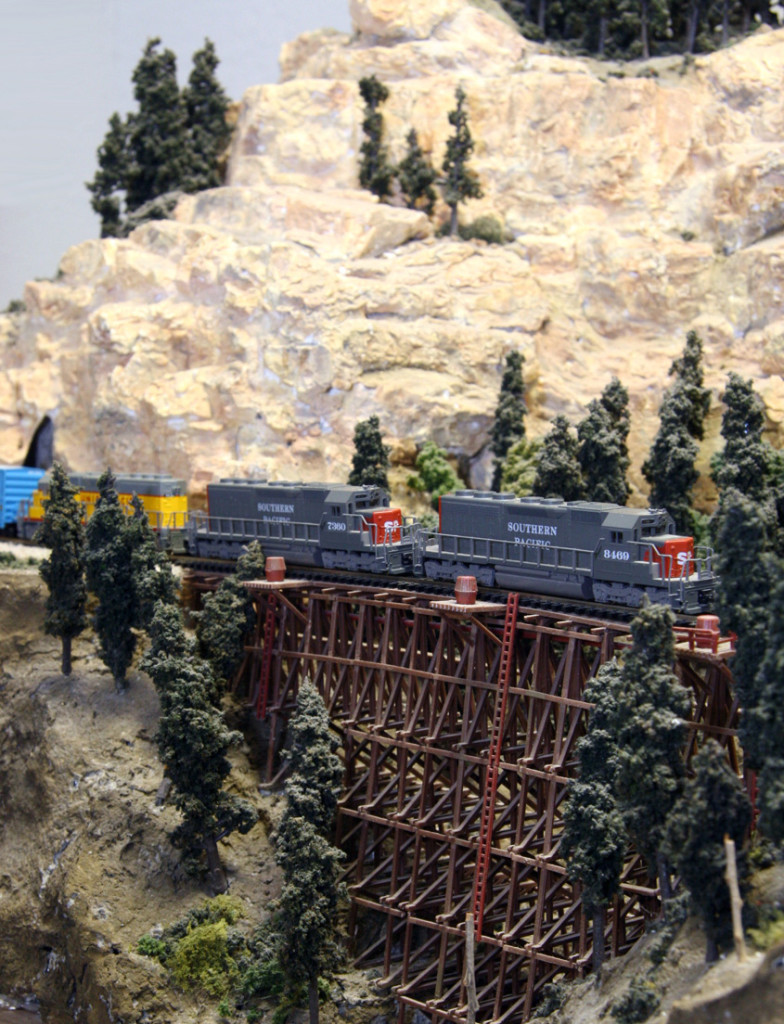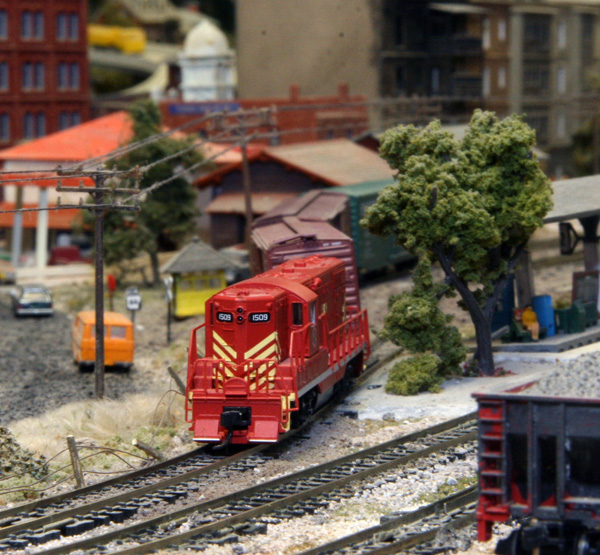All about the community of model railroading and rail enthusiasm
The Whitehurst & Pine Ridge Railroad was disassembled in 2017 but is being rebuilt, similar in scope, to a much larger size. Following is a description of the layout as it existed from 1995-2017.
The Whitehurst & Pine Ridge Railroad is the official model railroad of Cowcatcher Magazine. Set in the hills of Northwest Arkansas in the mid-1980s during the Union Pacific merger era, the free-lanced N-scale subsidiary short line railroad has been a work in progress since 1984. The scope of the railroad is small but its strategic location southeast of Fort Smith offers plenty of opportunity from its Class I parent as well as the Kansas City Southern.
A mix of second-generation locomotives from UP, Missouri Pacific, Missouri-Kansas-Texas and Western Pacific move freight from interchanges in Pine Ridge, Whitehurst, Little Rock and Monroe. Locals run between Pine Ridge and Elaine, hauling coal, paper, cement, grain, lumber, petroleum, plastics and other goods.
UP trains from Kansas City, Dallas and Ft. Smith interchange with the W&PRR at Pine Ridge. KCS, with service from Fort Smith to Texarkana, interchanges with UP and the W&PRR in Pine Ridge.
The Monroe Northern, W&PRR’s sister short line in Monroe, provides a big connection for the cement industry. Cars bound for Fort Smith, Kansas City and Pine Bluff, Ark., are interchanged with UP and Burlington Northern in the Monroe Industrial District.
The layout has three levels compacted into a 9′ x 16′ footprint and runs on DC. Trains are controlled by MRC walk-around throttles.


Time off from model railroading is sometimes good for the soul. In the two-plus years that the Whitehurst & Pine Ridge Railroad has been laid up there has been plenty of opportunity to reflect about what makes an effective operating N-scale model railroad.
In the July/August 2019 edition of the Cowcatcher, plans were revealed to correct mistakes made on the previous iteration of the free-lanced railroad focused on the Union Pacific somewhere in Arkansas in the mid-1980s during the transition era.
To put it bluntly, the old layout was outdated and cramped. The operations plan was forced on a track plan that was initially built for continuous running. Operators had no elbow room and visitors could only stand in one place to observe 30 years of work. All they could do was polite nod like Chevy Chase did over the Grand Canyon.
While there was plenty to look at and many cars to move, the experience wasn’t comfortable.